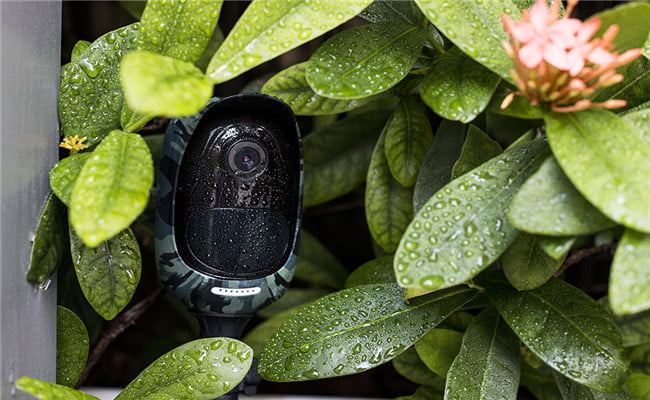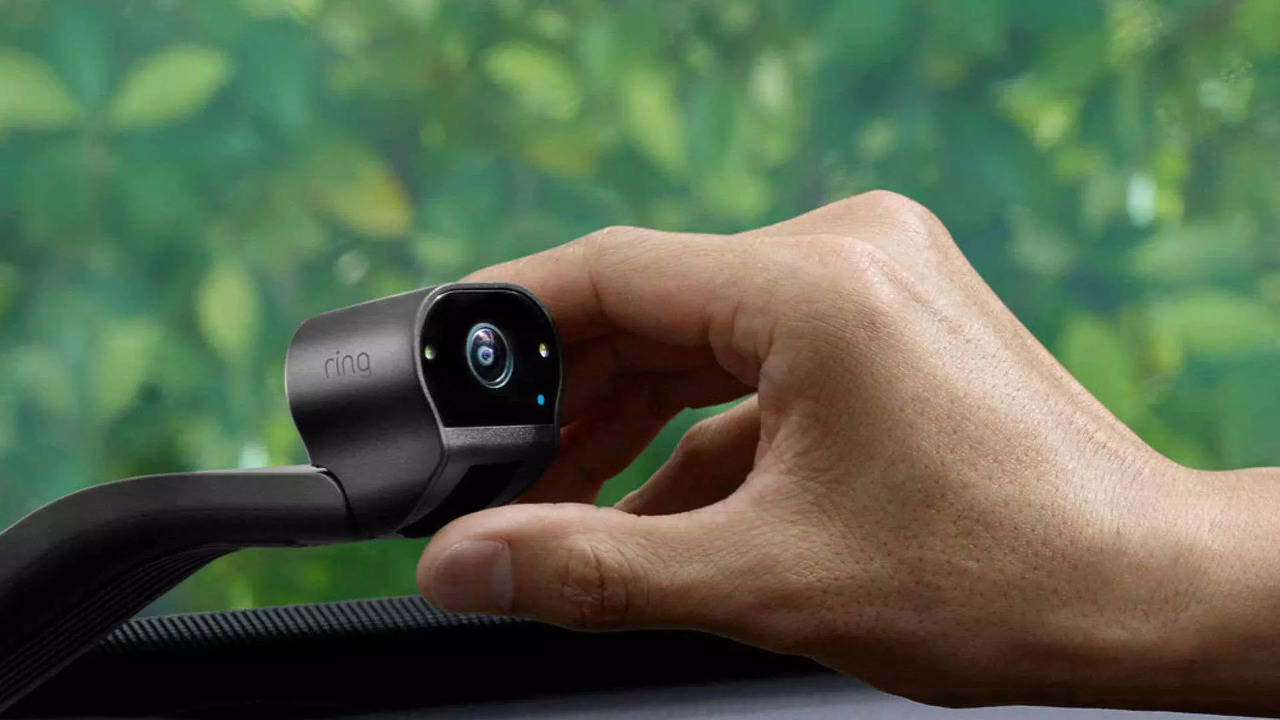Introduction
In an era where security and surveillance are paramount, the need for discreet monitoring has become increasingly important. Whether it's for home security, business protection, or personal reasons, hiding a camera in a wall offers a seamless solution. However, it's crucial to approach this task with careful consideration and responsibility.
Types of Cameras Suitable for Wall Concealment
Choosing the right camera is the first step in successful wall concealment. Opt for compact and discreet cameras with features that facilitate seamless integration into the wall. Look for models designed for inconspicuous surveillance without compromising on image quality.
Choosing the Right Wall for Concealment
Not every wall is suitable for hiding a camera. Factors like visibility, accessibility, and structural considerations play a crucial role. Select a wall that provides optimal coverage while remaining inconspicuous. Finding the perfect balance is essential for effective surveillance.
Necessary Tools and Materials
Before diving into the installation process, grab the necessary tools and materials. You'll need a set of basic tools like a drill, screwdriver, and level, along with materials such as screws, anchors, and a camera mounting kit. Each item has its role in ensuring a secure and discreet installation.
Step-by-Step Guide to Hiding a Camera in a Wall
1. Preparing the Wall Surface
Begin by preparing the wall surface for installation. Smooth surfaces ensure a flush fit, reducing the risk of detection. Sanding, cleaning, and priming the area are crucial steps for a professional finish.
2. Installing the Camera Securely
Follow the instructions to install the camera securely. Use anchors and screws to ensure stability. Position the camera for optimal coverage while considering angles and potential obstructions.
3. Concealing Wires and Connections
To maintain the illusion of seamless integration, conceal wires and connections effectively. Use cable covers or channel raceways to hide wires along the wall. This step is essential for maintaining the covert nature of the installation.
4. Testing the Camera for Functionality
After the installation is complete, it's important to test the camera to verify that it is functioning correctly. Check the field of view, image quality, and any additional features. Make necessary adjustments to the settings to optimize the performance as required.
Ensuring Privacy and Legal Compliance
While the intention may be security, it's crucial to respect privacy and comply with legal regulations. Be aware of local laws regarding surveillance and take steps to ensure that the use of hidden cameras remains within ethical boundaries.
Creative Ideas for Camera Integration
Thinking outside the box can enhance the effectiveness of camera concealment. Consider integrating cameras into everyday objects or using camouflage techniques to make them blend seamlessly with the environment.
DIY Hidden Camera Ideas: Blending Security with Creativity
Exploring easy DIY hidden camera ideas adds a touch of creativity to your security measures. From using household items to crafting custom covers, discover inventive ways to conceal your indoor surveillance.
Best Way to Hide a Camera
Discovering the best way to hide a camera involves a combination of effective concealment and strategic placement. Uncover tips and tricks for ensuring your camera remains discreet while capturing the desired footage.
Hiding Places: Hide a Security Camera in Plain Sight
Explore various hiding places that allow you to hide a security camera in plain sight. From common household items to unsuspecting corners, find spots that offer both visibility and camouflage.
DIY Indoor Hidden Camera Ideas
For those who prefer a hands-on approach, delve into DIY indoor hidden camera ideas. Craft customized solutions that suit your interior while maintaining the effectiveness of your surveillance system.
Hidden Camera Ideas for Home: Balancing Security and Aesthetics
Achieving the perfect balance between home aesthetics and security is possible with hidden camera ideas tailored for residential spaces. Learn how to blend security seamlessly into your home environment.
Maintenance and Troubleshooting
Regular maintenance is key to the longevity of hidden cameras. Periodically check for signs of wear, clean lenses, and ensure all components are functioning correctly. Troubleshooting tips can help common issues that may arise.
Advantages and Disadvantages of Wall-Hidden Cameras
Hidden cameras offer benefits such as discreet monitoring and deterrence. However, it's essential to acknowledge potential drawbacks, including limited angles and the risk of misuse.
Addressing Common Concerns
How long do hidden cameras last?
Hidden cameras typically have a lifespan similar to regular surveillance cameras. With appropriate maintenance, they can remain functional and in good condition for many years.
Does concealing a camera affect its performance?
When installed correctly, concealing a camera minimally impacts its performance. However, factors like placement and maintenance play a role.
Can hidden cameras be detected?
While advanced technology makes detection challenging, no method is foolproof. Regular checks and responsible usage mitigate the risk of detection.
Are there legal implications to hiding cameras?
Yes, there can be legal implications. It's essential to be aware of and comply with local laws to avoid legal consequences.
How can I secure footage from unauthorized access?
Using secure passwords, encryption, and regularly updating security protocols can help protect footage from unauthorized access.
Real-Life Examples and Case Studies
Sharing success stories and lessons learned from real-world scenarios adds practical insights. Learn from the experiences of others to enhance the effectiveness of your concealed camera setup.
Security Tips for Users
Protecting your surveillance system goes beyond installation. Implement robust security measures, including password protection, encryption, and regular system updates, to safeguard your footage from potential breaches.
Future Trends in Camera Technology
As technology evolves, so does surveillance equipment. Stay informed about emerging trends such as AI integration, improved resolution, and enhanced connectivity, to future-proof your camera setup.
Exploring Wall-Mounted Camera Concealment Techniques:
This heading directs attention towards a thorough investigation of various methods and strategies employed to conceal cameras within wall structures. It entails a comprehensive exploration of the techniques and mechanisms utilized to hide cameras effectively, ensuring they remain undetected while still functioning optimally. The exploration may encompass aspects such as the selection of appropriate camera types, the intricacies of wall installation, and innovative approaches to camouflage the devices within the wall environment. Additionally, it may delve into considerations regarding the aesthetics, security, and practicality of different concealment techniques, providing readers with a comprehensive understanding of the options available for concealing cameras within walls.Ethical Considerations in Wall-Hidden Surveillance:
This heading underscores the significance of ethical awareness and deliberation when deploying hidden cameras within walls for surveillance purposes. It encompasses a detailed examination of the ethical implications associated with covert monitoring, emphasizing the importance of respecting privacy rights, obtaining consent where necessary, and adhering to legal regulations governing surveillance activities. The discussion may delve into complex ethical dilemmas, including issues of transparency, accountability, and the balance between security concerns and individual liberties. By exploring these ethical considerations, readers can gain insights into the ethical dimensions of wall-hidden surveillance and make informed decisions regarding its deployment and usage.Innovative DIY Solutions for Hidden Cameras:
This heading highlights the exploration of creative and resourceful do-it-yourself (DIY) approaches for concealing cameras within wall structures. It involves the presentation of inventive and practical solutions that individuals can implement using readily available materials and tools. The discussion may cover a wide range of DIY techniques, including custom enclosures, camouflage methods, and integration with existing architectural features. By showcasing innovative DIY solutions, the aim is to empower readers with the knowledge and inspiration to undertake their own camera concealment projects, tailored to their specific needs and preferences. Additionally, the exploration of DIY solutions may foster creativity and problem-solving skills among readers, encouraging them to think outside the box when addressing security and surveillance challenges.Optimizing Camera Placement for Maximum Effectiveness:
This heading emphasizes the importance of strategic positioning when installing hidden cameras within walls. It involves a comprehensive analysis of factors such as line of sight, coverage area, and potential obstructions to ensure optimal surveillance effectiveness. The discussion may delve into techniques for determining the ideal placement of cameras based on specific security objectives and the layout of the monitored area. Additionally, considerations such as lighting conditions, camera angles, and potential blind spots may be explored to enhance surveillance coverage and minimize vulnerabilities. By optimizing camera placement, readers can maximize the effectiveness of their hidden surveillance systems, enhancing security and peace of mind.Ensuring Seamless Integration of Cameras with Wall Structures:
This heading focuses on achieving a seamless and inconspicuous integration of cameras within wall structures to maintain the covert nature of surveillance. It involves a detailed examination of techniques and methods for concealing cameras in a manner that blends harmoniously with the surrounding environment. The discussion may cover aspects such as color matching, texture blending, and architectural alignment to ensure that the cameras remain undetectable to casual observers. Additionally, considerations related to wiring concealment, access points, and maintenance accessibility may be addressed to ensure practicality and long-term functionality. By prioritizing seamless integration, readers can achieve discreet surveillance without compromising the aesthetic integrity of their wall structures.Conclusion
Hiding a camera in a wall can be a strategic and effective solution for discreet surveillance. By following the outlined steps and considering ethical and legal aspects, users can enhance security without compromising privacy. Remember, responsible usage is key to maximizing
FAQs
How do you hide a wireless camera on the wall?
Select a compact wireless camera, choose an optimal location, prepare the wall, secure installation, conceal wires, and test functionality for peace of mind with home security cameras.
How do you discreetly hide a wireless camera?
Opt for small wireless cameras with color night vision, use camouflage techniques, strategically place cameras in the living room or front door, and consider aesthetic compatibility for enhanced home security.
How do you make a wireless security camera discreet?
Choose compact designs for wireless security cameras with battery power, employ camouflage options, strategically place cameras in the living room or front door, and consider custom covers for enhanced home security with video doorbells.
How do you secure a wireless camera to the wall?
Gather tools for battery-powered wireless cameras, prepare the wall, follow manufacturer instructions for wireless camera installation, use anchors and screws, conceal wires, and test for functionality with video recording and cloud storage.



Post a Comment